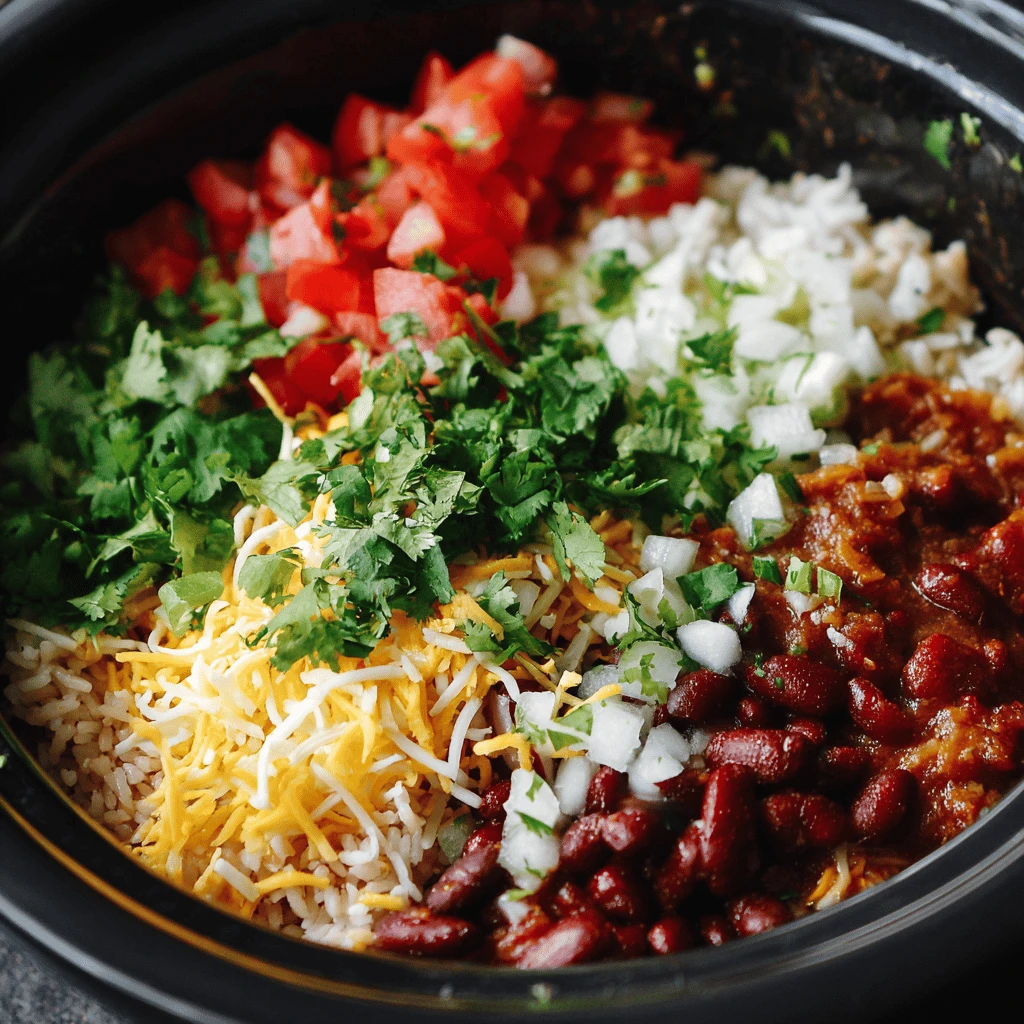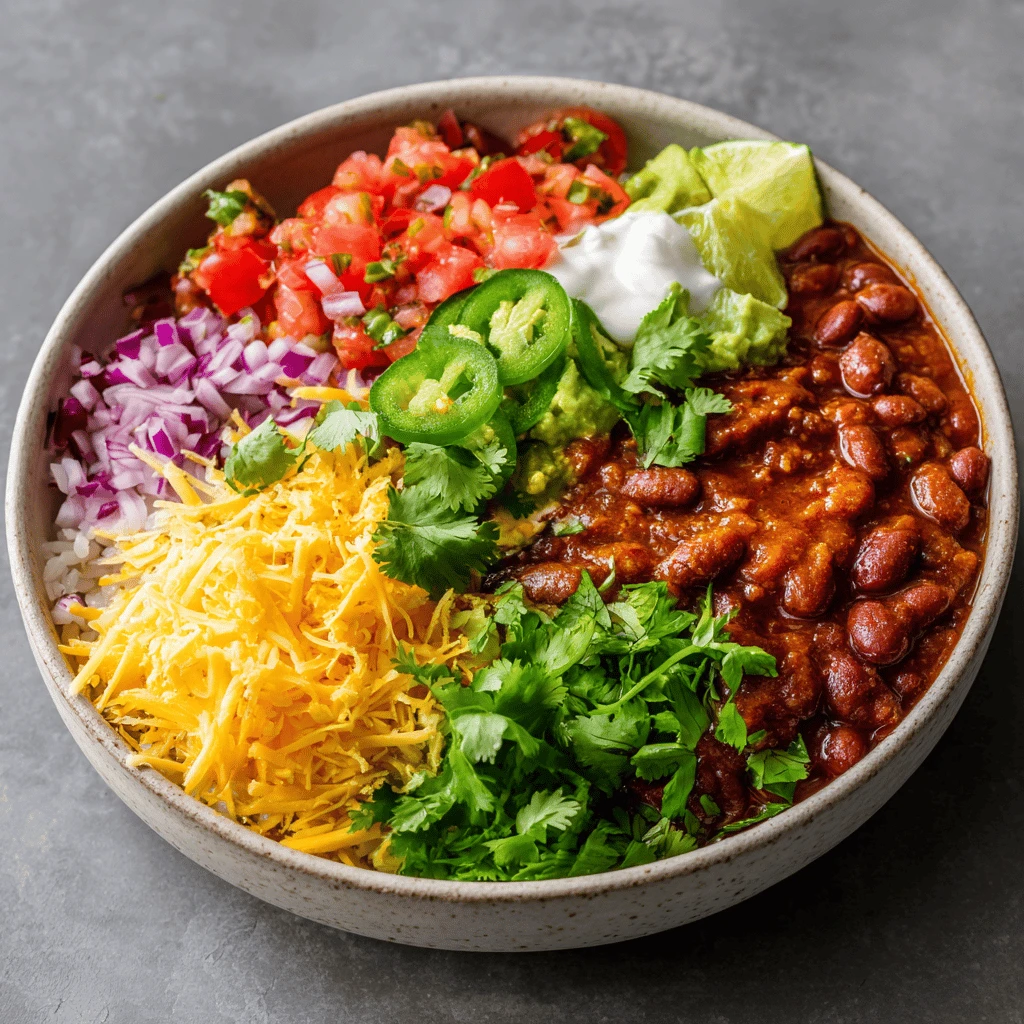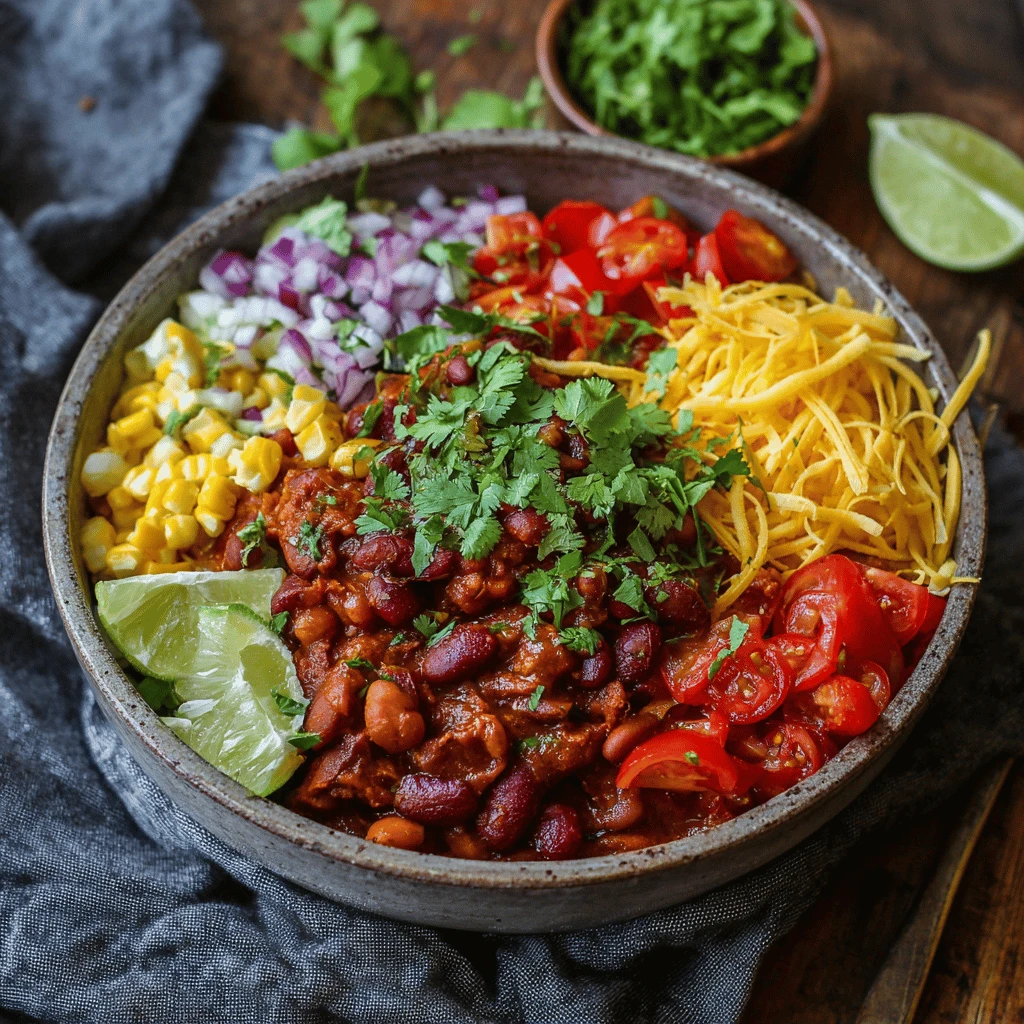Comfort Food Crockpot Beans Burrito Bowl: A Delicious & Easy Recipe
Craving a hearty and satisfying meal that’s both delicious and easy to prepare? Look no further than this Comfort Food Crockpot Beans Burrito Bowl recipe! This recipe combines the ease of a slow cooker with the customizable fun of a burrito bowl, making it perfect for busy weeknights, meal prepping, or a cozy weekend dinner.
Why Crockpot Beans are Perfect for Burrito Bowls
Crockpots, also known as slow cookers, are kitchen powerhouses, renowned for their ability to transform simple ingredients into flavorful and tender dishes with minimal effort. Using a crockpot for your beans in a burrito bowl offers several advantages:
- Effortless Cooking: Simply toss the ingredients into the crockpot, set it, and forget it. The slow, consistent heat tenderizes the beans and allows the flavors to meld beautifully.
- Enhanced Flavor: Slow cooking allows the spices and seasonings to penetrate the beans deeply, resulting in a much richer and more complex flavor than stovetop cooking.
- Convenience: Prepare the beans in the morning and have a warm, ready-to-go base for your burrito bowls when you get home from work.
- Meal Prepping Champion: Cook a large batch of beans on the weekend and use them in burrito bowls throughout the week.
- Budget-Friendly: Dried beans are significantly cheaper than canned beans, making this a cost-effective meal option.
Crafting Your Comfort Food Crockpot Beans
Creating flavorful crockpot beans is easier than you might think. Here’s a detailed guide:
Choosing Your Beans
The foundation of any great bean burrito bowl is, of course, the beans! There are several types of beans that work exceptionally well in a crockpot:
- Pinto Beans: A classic choice, pinto beans have a creamy texture and mild flavor that pairs well with a variety of spices.
- Black Beans: These beans have a slightly sweeter and earthier flavor than pinto beans and hold their shape well during slow cooking.
- Kidney Beans: Known for their rich, kidney-like shape and robust flavor, kidney beans are a great option for those who prefer a bolder taste.
- Great Northern Beans: These white beans have a delicate flavor and creamy texture, making them a versatile choice for any burrito bowl.
Essential Ingredients
Beyond the beans, a few key ingredients will elevate your crockpot beans to the next level:
- Aromatics: Onions, garlic, and bell peppers add depth and complexity to the flavor profile. Sautéing them before adding them to the crockpot enhances their flavor even further.
- Spices: Cumin, chili powder, smoked paprika, oregano, and coriander are the building blocks of a flavorful bean mixture. Adjust the quantities to suit your spice preference.
- Liquid: Broth (chicken or vegetable) is preferred for adding moisture and flavor. Water can be used in a pinch, but the broth adds a richer taste.
- Acid: A squeeze of lime juice or a splash of apple cider vinegar brightens the flavor and balances the richness of the beans.
- Optional Add-ins: Jalapeños, chipotle peppers in adobo sauce, or diced tomatoes can add extra heat and depth of flavor.
Step-by-Step Instructions
1. Soak the Beans (Optional): Soaking dried beans overnight helps to reduce cooking time and makes them easier to digest. However, it’s not strictly necessary. If you’re short on time, rinse the beans thoroughly before adding them to the crockpot.
2. Sauté the Aromatics (Optional): Sautéing the onions, garlic, and bell peppers in a skillet with a little olive oil before adding them to the crockpot enhances their flavor.
3. Combine Ingredients: Add the beans, sautéed aromatics (if using), spices, broth, and optional add-ins to the crockpot.
4. Cook on Low: Cook on low for 6-8 hours, or until the beans are tender. Cooking time may vary depending on your crockpot and the type of beans you’re using.
5. Adjust Seasoning: Once the beans are cooked, taste and adjust the seasoning as needed. Add more salt, pepper, or spices to your liking.
6. Mash (Optional): For a creamier texture, mash some of the beans with a potato masher or the back of a spoon.
Assembling Your Perfect Burrito Bowl
Now for the fun part: assembling your burrito bowl! The beauty of burrito bowls is that they are completely customizable. Here are some popular toppings and variations:
Core Components
- Base: Start with a bed of cooked rice (white, brown, or cilantro-lime rice). Quinoa or cauliflower rice are excellent lower-carb alternatives.
- Beans: The star of the show! A generous scoop of your flavorful crockpot beans.
- Protein (Optional): Add grilled chicken, steak, shrimp, tofu, or crumbled tempeh for extra protein.
- Greens: Shredded lettuce, spinach, or kale adds freshness and nutrients.
Flavor Enhancers
- Salsa: Choose your favorite salsa, from mild to spicy. Pico de gallo, salsa verde, or roasted tomato salsa are all great options.
- Guacamole or Avocado: Creamy guacamole or sliced avocado adds richness and healthy fats.
- Sour Cream or Greek Yogurt: Adds a tangy and cooling element.
- Cheese: Shredded cheddar, Monterey Jack, or cotija cheese are popular choices.
- Corn: Grilled, roasted, or canned corn adds sweetness and texture.
- Pickled Onions or Jalapeños: Adds a tangy and spicy kick.
- Cilantro: Fresh cilantro adds a bright and herbaceous flavor.
- Lime Wedges: A squeeze of lime juice brightens the flavors of the entire bowl.
Creative Variations
- Spicy Chipotle Bowl: Add chipotle peppers in adobo sauce to the beans and use a spicy salsa.
- Vegetarian Fiesta Bowl: Load up on vegetables like roasted sweet potatoes, bell peppers, and corn.
- BBQ Chicken Bowl: Use shredded BBQ chicken instead of traditional Mexican-style protein.
- Mediterranean Bowl: Swap the rice for quinoa, add grilled halloumi cheese, and top with a lemon-tahini dressing.
Tips & Tricks for the Best Burrito Bowl Experience
- Rice Matters: The type of rice you use significantly impacts the overall flavor and texture. Experiment with different types to find your favorite. Cilantro-lime rice is a popular choice for its bright flavor.
- Warm Your Tortillas (Optional): If you want to wrap your burrito bowl ingredients in a tortilla, warm it slightly on a skillet or in the microwave to make it more pliable.
- Layer Strategically: Start with the base (rice or quinoa), then add the beans, protein, and other toppings in layers to ensure that each bite is flavorful and balanced.
- Don’t Overfill: Avoid overfilling your bowl or tortilla, as this can make it difficult to eat and messy.
- Prep Ahead: Chop vegetables, cook rice, and prepare any other toppings in advance to make assembly quick and easy.
- Storage: Store leftover burrito bowl ingredients separately in airtight containers in the refrigerator. This will prevent the rice from becoming soggy and keep the toppings fresh.
FAQs about Crockpot Beans and Burrito Bowls
- Do I need to soak my beans before cooking them in the crockpot?
Soaking is optional but recommended. It can reduce cooking time and make beans easier to digest. Soak them overnight or use the quick-soak method (boil for 2 minutes, then let sit for 1 hour).
- Can I cook canned beans in a crockpot?
Yes, you can, but it's usually not necessary. Canned beans are already cooked. You can add them to the crockpot with your spices and other ingredients to warm them up and infuse them with flavor, but cook time will be much shorter (1-2 hours on low).
- How do I prevent my beans from being mushy?
Avoid overcooking the beans. Start checking them after 6 hours on low and adjust cooking time as needed. Also, avoid adding acidic ingredients like tomatoes or vinegar until the beans are almost cooked, as they can prevent the beans from softening.
- Can I freeze leftover crockpot beans?
Yes, crockpot beans freeze very well. Let them cool completely before transferring them to freezer-safe containers or bags. They can be stored in the freezer for up to 3 months.
- What if my beans are still hard after cooking for a long time?
Hard water can sometimes prevent beans from softening. Adding a pinch of baking soda to the cooking water can help. Make sure you are not adding salt or acidic ingredients too early in the cooking process.




